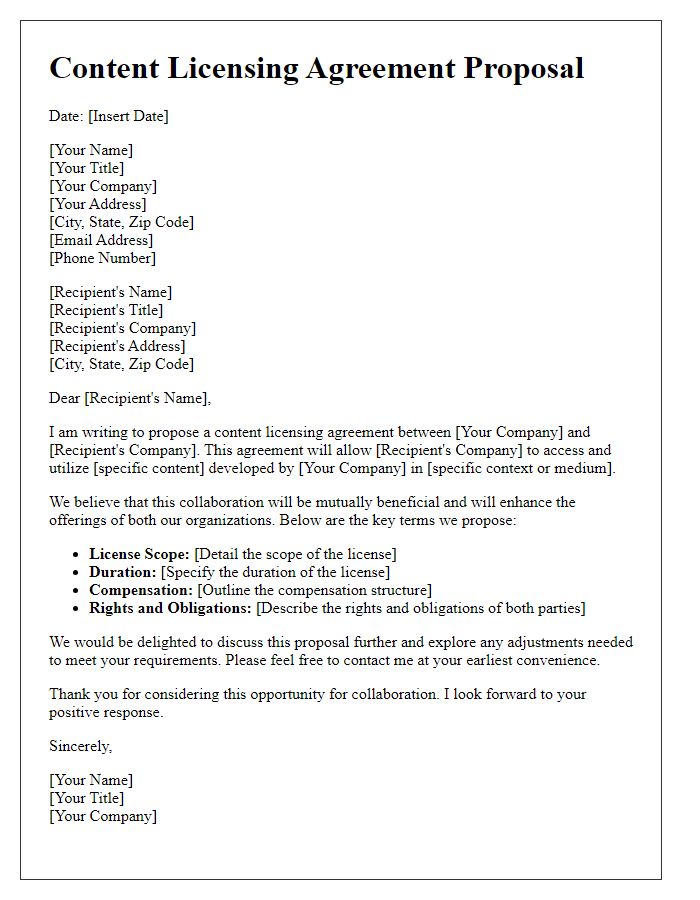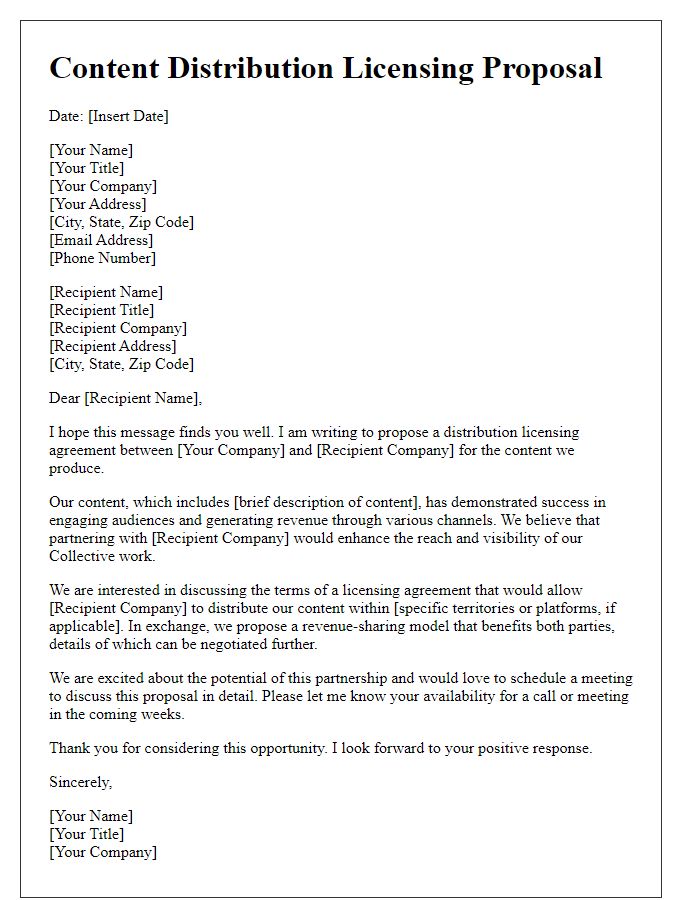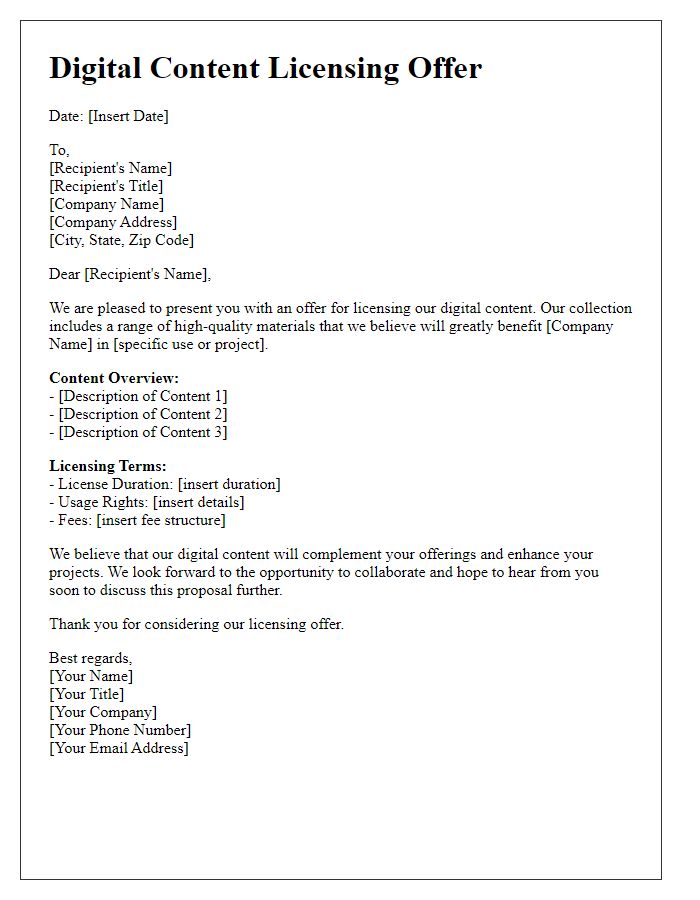Are you looking to unlock new possibilities for your creative work? A well-crafted content licensing proposal can be your key to expanding your reach and maximizing your revenue. In this article, we'll explore the essential elements of an effective letter template that makes your licensing intentions crystal clear and enticing to potential partners. Dive in to discover how to create a compelling proposal that opens doors to fruitful collaborations!

Clarity of Terms and Conditions
A content licensing proposal must ensure clarity of terms and conditions to establish a mutual understanding between parties involved. Detailed definitions of licensing rights are essential, including exclusivity stipulations for specific territories such as the European Union (EU) or North America. Duration parameters, often expressed in months or years, outline the time frame for content usage, while compensation structures, which can include upfront fees or royalties based on performance metrics, should be explicitly stated. Restrictions regarding modifications to content or derivative works must be clearly articulated to prevent conflicts, along with termination clauses that specify conditions under which the agreement can be dissolved. Overall, clear articulation of these factors enhances transparency and fosters trust in licensing arrangements.
Licensing Scope and Rights
The licensing scope encompasses a comprehensive range of rights tailored for content utilization, covering various forms of media including digital platforms, print publications, and broadcast channels. Specific rights include reproduction and distribution allowances across different territories, such as North America, Europe, and Asia, with emphasis on language adaptations and derivative works. Furthermore, the proposal outlines exclusivity terms, ensuring the licensee's unique access to the content for a specified duration, promoting brand strength and market presence. Additionally, any revenue-sharing mechanisms or royalty structures linked to content monetization will be explicitly detailed, investing in a mutually beneficial partnership.
Compensation and Payment Structure
A content licensing proposal typically includes a clear outline of the compensation and payment structure, detailing monetary agreements between the content creator (licensor) and the distributor (licensee). The compensation model may involve upfront fees, milestone payments, or royalties based on performance metrics such as revenue generated. It is crucial to specify the payment schedule, including due dates tied to content delivery milestones or quarterly reviews. Additionally, the proposal should clarify any additional fees, such as licensing renewals or territory expansions, all of which are essential for maintaining transparency in the financial relationship. Understanding the total licensing cost and payment terms can significantly influence the partnership's success, particularly within industries that frequently negotiate content rights, such as publishing, music, or film.
Protection of Intellectual Property
A comprehensive content licensing proposal is essential for the protection of intellectual property (IP) rights associated with creative works, such as literature, music, and software. Intellectual property laws (including copyrights, trademarks, and patents) serve as legal frameworks to safeguard original content, preventing unauthorized use or reproduction. The proposal should detail the scope of licensing, specifying permissible usage and geographical boundaries, such as North America or Europe. Clear financial terms, including royalty rates or upfront fees, must be outlined to ensure fair compensation. Additionally, provisions for infringement protection should be included, detailing steps for enforcement and dispute resolution, thus reinforcing the importance of protecting creators' rights in the ever-expanding digital marketplace.
Renewal and Termination Clauses
In a content licensing proposal, the inclusion of renewal and termination clauses is essential for defining the ongoing relationship between the parties involved and for outlining the conditions under which the agreement can be continued or concluded. The renewal clause specifies the terms under which the license can be renewed, typically including timeframe (such as a 12-month notice period prior to expiration), conditions (such as performance metrics or payment schedules), and any potential adjustments to fees or rights; this ensures clarity and predictability for both parties (rights holders and licensees). The termination clause addresses conditions that may lead to ending the agreement prematurely, such as breach of contract, insolvency events, or force majeure situations (unforeseeable circumstances that prevent fulfillment), and should detail notice requirements (such as a 30-day written notice) and any obligations that persist post-termination, including intellectual property rights retention, payments, or usage rights. Effective drafting of these clauses is crucial for protecting the interests of all stakeholders involved in the licensing arrangement.













Comments